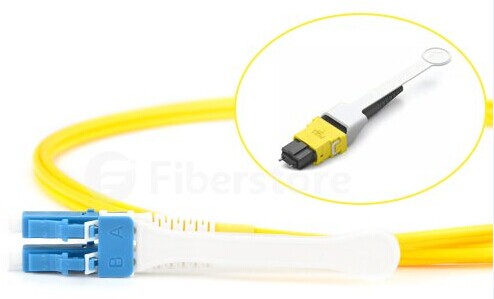With the increased demands on data center throughput, 40/100G Ethernet is an integral component of today’s data center. The implementation of 40/100G Ethernet is dependent upon a variety of organizational factors, including existing infrastructure, budget, throughput demand and leadership priority. In this article, we will discuss the factors that need to be considered when preparing for 40/100G Ethernet migration.
As data center speeds increase, optical loss budgets decrease. Optical loss occurs over cabling distance and at mating points where connections are made. Since most data center cabling runs are shorter distances (compared to long-haul campus runs), the inherent losses from distance in a data center are somewhat negligible compared to the losses incurred from mating points. As connections in the data center increase to improve manageability, performance suffers. This is because added connections contribute to increased dB loss. Thus, a balance must be maintained between manageability and performance.
Recommended cabling infrastructure deployments in the data center are based on guidance found in Telecommunications Infrastructure Standard for Data Centers, or TIA-942. Cabling deployed in the data center today must be selected to support data rate applications of the future. Since parallel-optics technology requires data transmission across multiple fibers simultaneously, a multifiber (or array) connector is required. Using MPO-based connectivity in today's installations is a simple and easy deployment. Starting with 10G, a 12-fiber MPO cable is deployed between the two 10G switches. Modules are used at the end to transition from the 12-fiber MPO to LC duplex. When it is with 40G, the use of a 12-fiber or 24-fiber MPO jumper is needed to establish connectivity between the switches.
When migrating to 40/100G speeds, there are several connectivity options to consider when planning your cabling infrastructure. The first uses long-haul (LX) transceivers with single-mode (SM) cabling. Data is transmitted via serial transmission. In order to work effectively over long distances, the lasers used in LX transceivers are extremely precise and expensive. This drastically increases the overall cost of an LX/SM connectivity solution. The next option uses short-haul (SX) transceivers with multi-mode cabling. Data is transmitted via parallel optic transmission. Parallel optic transmission aggregates multiple fibers for transmission and reception. Taking the 40G SR4 transmission for example, Finisar FTL410QE2C compatible 40GBASE-SR4 QSFP+ transceiver operates in four channels over multi-mode cabling, four fibers transmitting at 10G each, while four fibers receiving at 10G each. This means a total of eight strands of fiber will be utilized for a 40G Ethernet channel.
If multi-mode cables are being used to migrate to 40/100G Ethernet, it is recommended they be OM3 or OM4 fiber, replacing any OM1 or OM2 fiber cables. OM4, the newest fiber type on the market, transmits the most bandwidth and is more effective over longer distances. OM4 is highly recommended for any new installs as it provides the longest lifespan in a cabling infrastructure.
In conclusion, in order to migrate your network to 40/100G Ethernet smoothly, you are supposed to consider all these factors that may influence comprehensively. Only when you evaluate your current cabling infrastructure and choose the right connectivity methods can you ensure a smooth and trouble-free migration.











※コメント投稿者のブログIDはブログ作成者のみに通知されます